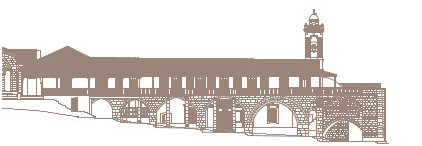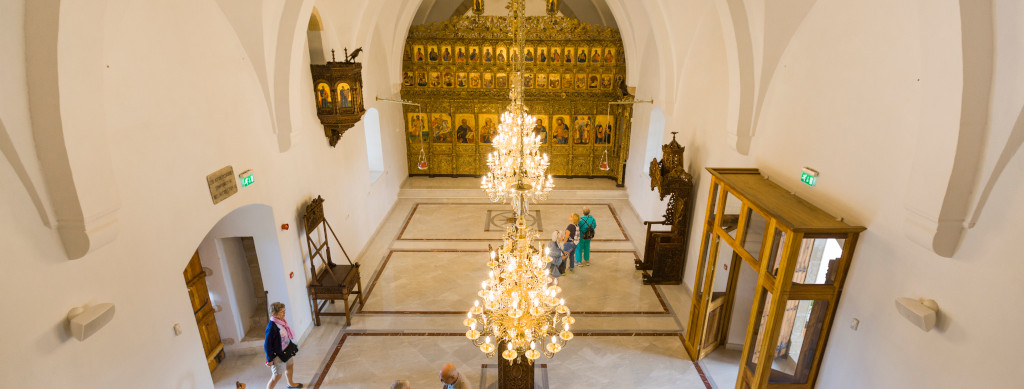Start Date: September 2014
End Date: November 2016

ABOUT THE MONASTERY
Located at the edge of a promontory overlooking the sea, near the tip of the Karpasia/Karpaz peninsula, in the northern part of Cyprus, Apostolos Andreas Monastery has always been a landmark of the island. The monastery has been a place of pilgrimage for Cypriots as well as for tourists travelling to the region for centuries. Now, thanks to a bicommunal restoration project, it is set to become a symbol of peace and cooperation between the Greek Cypriot and Turkish Cypriot communities of Cyprus. The building complex of the Monastery occupies a large area that starts at sea level, where the oldest buildings are located, and extends to the west where the latest guesthouses were built. The building complex includes a neoclassical church built in 1867 that has several annexes dating up to 1914. This church stands just above the west wall of the medieval chapel that was built, along with its surrounding additions, most likely during Frankish rule in the 15th Century. The belfry was constructed over the south-east corner of the church around the end of the 19th Century, or the latest at the beginning of the 20th Century, prior to 1906, An extended repair with strong cement plaster was done in 1930, due to extended erosion of the stone facing the sea.
THE CONSERVATION PROJECT
“Apostolos Andreas Monastery is more than a work of restoration. It represents two years of dialogue, inter-communal encounters and exchange of experiences between Greek Gypriot and Turkish Cypriot heritage professionals who worked together on this project, explains Tiziana Zennaro, UNDP Senior Programme Manager and Head of Office in Cyprus. “Until a couple of weeks aga, if you were anywhere near the project site, you would hear Cypriot dialects mixing as Greek Cypriot and Turkish Cypriot craftsmen, conservators, electricians, archaeologists, architects and engineers worked side by side.”
Long-awaited restoration work started in September 2014 after UNDP signed two historical contribution agreements with the Church of Cyprus and the EVKAF Administration. Apostolos Andreas Monastery has since become the first heritage conservation project in Cyprus to be fully funded by both communities. Supported by a contribution from USAID, and the commitment of a bicommunal network of heritage experts from both communities, the Apostolos Andreas Monastery is now one of UNDP’S key confidence-building projects in Cyprus.
Designed by the University of Patra, the overall restoration of the Apostolos Andreas Monastery will be developed over two phases:
- Phase A: Restoration of the church and the adjacent buildings, and geotechnical investigations and tests.
- Phase B. Restoration of the chapel and the fountain, restoration of the building on the north wing, and external works around the complex
Works within Phase A started in September 2014 and included the full structural and architectural restoration of the main church as weil as new electrical and mechanical installations. Inside the church, the existing gynaikonitis (women’s section) was extended, and the altar, the ambon and the konastass were restored together with 58 icons. On the back of the church, a new arcade was constructed. Other works incuded the improvement and upgrading of the electrical and mechanical installations in the church and the adjacent buildings The works ensured that the church and the adjacent buildings are well restored to thetir original state in accordance with the technical designs and drawings. In this Phase, grotechnical investigations were also carried out in the area outside the chapel and the fountain, the results of which will be utilised for Phase B Instoration of the chapel and the fountain). Doaes of people tfrom both communities and members of the diplomatic community attended the completion ceremony on 7 November 2016 Hundreds of people celebrated Apostolos Andreas name day at the Monastery for the first time after restoration works were completed on 30 November 2016.
